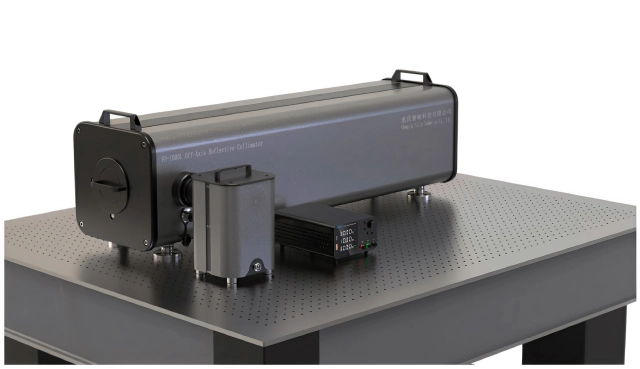Table of contents:
The Role of Off-Axis Collimators in Optical System Characterization
Using the FP-1000L to Test Basic and Advanced Optical Parameters
Advantages of Reflective Collimators in High-Precision Measurements
Integrating Beam Collimators into Your Optical Testing Workflow
The Role of Off-Axis Collimators in Optical System Characterization
Off-axis collimators play a crucial role in the evaluation and optimization of optical systems. The FP-1000L, designed by a renowned best reflective collimator supplier, exemplifies the advantages of this technology. With its 1000mm focal length and 100mm effective aperture, it provides a field of view greater than 1.6°, allowing for comprehensive analysis of optical components. The off-axis design significantly reduces stray light and unwanted reflections, ensuring that the measurements obtained are of the highest quality. This feature is particularly valuable in applications where precision is paramount, such as space exploration and advanced scientific research.
Using the FP-1000L to Test Basic and Advanced Optical Parameters
The versatility of the FP-1000L makes it an ideal choice for testing a wide range of optical parameters. As a product from a leading best reflective collimator manufacturer, it excels in optical axis alignment for multi-axis systems, a critical process in ensuring the accuracy of complex optical setups. The collimator's ability to provide ultra-low divergence angle parallel light is essential for evaluating the performance of lenses, mirrors, and other optical components. Furthermore, its exceptional wavefront quality of ≤ λ/20 @ 632.8nm over 80% of the clear aperture allows for precise measurements in both visible and infrared spectrums, making it invaluable for infrared imaging quality testing.
Advantages of Reflective Collimators in High-Precision Measurements
Reflective collimators, like the FP-1000L from a top best reflective collimator supplier, offer several advantages over their refractive counterparts in high-precision optical measurements. The primary mirror, made of quartz glass or glass-ceramic, provides excellent stability and minimal thermal expansion, crucial for maintaining accuracy across varying environmental conditions. The aluminum coating with a silicon protective layer ensures durability and high reflectivity, with options for gold, silver, or dielectric coatings to suit specific wavelength requirements. This flexibility makes the FP-1000L adaptable to a wide range of applications, from laser beam expansion to simulating infinite targets for optical testing.
Integrating Beam Collimators into Your Optical Testing Workflow
Incorporating a high-quality beam collimator like the FP-1000L into your optical testing workflow can significantly enhance the accuracy and efficiency of your measurements. As a product from a leading best reflective collimator manufacturer, it comes with standard components such as filters, attenuators, and various reticles, allowing for customized setups tailored to specific testing requirements. The availability of custom infrared reticles further extends its capabilities in specialized applications. When integrating the FP-1000L into your testing procedures, consider factors such as the desired wavelength range, required field of view, and the specific parameters you need to measure. Consulting with a knowledgeable best reflective collimator supplier can help ensure optimal configuration for your unique needs.
The FP-1000L Off-Axis Reflective Collimator represents a significant advancement in optical testing technology. Its exceptional performance characteristics, including high wavefront quality and versatile design, make it an invaluable tool for researchers and engineers working on cutting-edge optical systems. By choosing a collimator from a reputable best reflective collimator supplier, you can ensure that your optical measurements are of the highest possible quality. As optical systems continue to evolve and push the boundaries of what's possible, instruments like the FP-1000L will play an increasingly critical role in their development and optimization, paving the way for future innovations in fields ranging from telecommunications to space exploration.

Comments
Post a Comment